A daysack should be able to accommodate all the gear and clothing you need on your single-day walk on the hills or in the countryside.
Depending on where and when you’re going, a range of 15 to 35 litres capacity is a good guide. For longer journeys in the mountains, you’re likely to need a rucksack towards the bigger end of the scale, for spare clothing, food, water and emergency gear such as a plastic bivvy bag or shelter.
If you, like me, always carry a camera too, then you need to take that into account as this will take up extra space and add to the weight.
For lower-level strolls in the countryside, or in urban situations, a smaller pack may be suitable.
For winter outings, when extra clothing and gear is likely to be needed, one of the larger packs will be necessary.
Some of the packs we tested will double up as a backpack for urban use or commuting, as well as walking excursions. Very few rucksacks are truly waterproof as, even with proofing on their fabrics, rain can seep in through stitching and seams. Only one pack in the test was completely waterproof, but many have rain covers that stash away and can be wrapped over the rucksack in wet weather.
We tested the packs for performance – how well they carried their load; how well balanced it felt; and ease of use. We also evaluated how comfortable they felt. Nothing spoils a journey into the outdoors than a pack that causes aches or discomfort. The best rucksacks are the ones you can put on your back and forget about – something the best ones in our test achieved.
We also marked the packs for useful features, overall quality of materials and design, and value for money.
The rucksacks were all tested over an extended period from mid-summer to late autumn.
Alpkit Ledge 30
Price: £60
Weight: 836g
Country of manufacture: Vietnam
Colour: grey
Rated capacity: 30 litres
The Alpkit pack is a conventional walkers’ rucksack with a roomy top-loading main compartment and floating lid.
The fabric of the rucksack is tough-feeling 210 denier ripstop nylon and the base of the Ledge 30 is a thicker reinforced 420 denier fabric. The nylon has a durable water-repellent polyurethane treatment to help shed the showers.
The back consists of a semi-stiffened main element, with two mesh-covered foam sections separated by a venting groove up the middle. The hip belt unit has foam padding at the base of the back, extending out to the hip fins. The foam has ventilated mesh covering. The front section of the hipbelt is narrower webbing with a plastic buckle fastening. Adjustment is by pulling the strapping inwards and there are retaining loops for excess webbing. On each hip fin is a small, zipped, mesh pocket.
The rucksack harness is broad over the shoulder areas, with ventilated foam padding. There are shoulder adjusters for pulling the pack closer into the body, useful when carrying a heavier load. The sternum strap is adjustable for height in four positions using a daisy chain webbing arrangement. The buckle has a built-in whistle.
There are twin stretch-mesh bottle holders on the sides of the main body, which has broad webbing volume adjusters each side, with plastic buckle fastening, so you can attach items such as a rope on the outside of the pack.
There are two ice-axe or walking pole loops and top retainers. The bottom loops can be tucked away into the mesh pockets if not being used, while the top retainers have elasticated shockcords with spring toggle fastenings. These are attached to a short daisy chain webbing set-up with two possible heights.
The main body of the Alpkit pack has a single large compartment, within which is an elasticated pouch for hydration reservoir. There’s a plastic hanging loop for a reservoir. Drinking tube exit is to the right shoulder.
Closure is by a conventional drawcord at the top, with and additional webbing strap and buckle. This could be used for retaining a rope if needed.
The lid has an outer compartment with rear zip with double pullers. Underneath the lid is a smaller zipped pocket which has a key loop.
The lid is a floating design and can be raised a little to allow the main compartment to be overstuffed and still retain a covering. A single central webbing strap and buckle retain the lid to the main body of the rucksack.
In use, the Alpkit pack was comfortable. There was just enough padding in the shoulder harness and the venting did help keep down perspiration build up a little.
The uncluttered main compartment swallows a good amount of gear – enough for a day’s outing from spring to autumn or even a lightweight winter walk. Entry into the pack is from the top, with a drawstring and webbing strap and plastic buckle. The strap is long enough to enable a rope to be secured by it.
The back was fairly comfortable too, with two ridged elements sitting from the shoulder blade area downwards. The addition of a back plate helps stop the rucksack bowing out into the back when fully packed.
The central channel and the mesh covered ridged foam was moderately successful in venting the back, but there was some build-up of perspiration.
Adjusting the height of the sternum strap was slightly involved, and necessitated sliding each side out of the daisy chain webbing and into the new position, which was more time consuming than anchors that slide on rails. We found it was best done before setting out rather than on the hoof.
The hipbelt fins use similar vented foam to the harness straps, and were comfortable, holding the weight of the pack firmly in place. The two zipped mesh pockets on the fins are fairly small – big enough to take a smartphone or a compass.
The lid capacity was medium, and the under-lid pocket was useful for items that you need to access quickly but keep secure. The key loop in the pocket is a useful feature so when you arrive back at your home or car you can find your keys quickly.
The dual-purpose ice-axe and pole loops worked well, incorporating a shorter webbing loop for poles and a longer one for axes. The top bungees secured the tools easily.
Alpkit’s ethos is to offer value for money, and the Ledge 30 scored in that. It’s middling in weight, offers all the features you’d expect and feels robust. Its plastic fittings may not be the slickest, but it’s well put together and should give good service on the hill. Price is very competitive.
Best uses: hill and mountain walking; longer-distance trail walking; lightweight winter walking; scrambling.
Performance 25/30
Comfort 24/30
Features 16/20
Quality 7/10
Value for money 9/10
Total score: 81/100
Aquapac Wet and Dry Backpack 25L
Price: £75
Weight: 640g
Country of manufacture: China
Colour: black
Rated capacity: 25 litres
The Aquapac rucksack is the only truly waterproof one in the test. It’s rated IPX6 – a stormproof level which means it will resist powerful water jets projected at all angles, though it’s not designed for prolonged immersion.
The Wet and Dry is the smaller of two models – the larger one having a 35 litre capacity.
Aquapac says it’s suitable for both urban commuting and outdoor activities as well as cycling. Obviously, it’s suited to wet situations such as stand-up paddleboarding.
The main compartment is a roomy single space with a sizable yellow inner pouch, detachable by unzipping. This is designed to keep wet items such as clothing in without them coming into contact with other items in the compartment. Conversely, if the main area is full of wet items, dry gear can be placed in it to keep it from getting wet. There’s also a smaller roll-top closure pocket in the pouch with a transparent panel so you can see what’s in it. This is useful for small items such as keys or phone. The yellow colour makes for easier visibility in the black interior of the pack.
The rucksack itself has a roll-top fastening to enable it to stay waterproof. Folding the closure over three times then clipping the two buckles together makes the pack stormproof.
There are two large mesh pockets on the sides, which will each accommodate a 2 litre drinks bottle.
To use a hydration bladder with the Aquapac rucksack, you remove the back stiffener from its pouch in the back and slide the reservoir in. The drink tube can be held in place using the small carabiner that’s supplied with the pack. It will accommodate most bladders up to 2 litres capacity.
The Wet and Dry 25L has wide, foam-backed harness straps with mesh ventilation. Each strap has two double and four single daisy-chain slots, which allow a carabiner to be inserted to hold gear. The straps extend to a long length if needed.
The wide harness straps spread the load well and were comfortable. The lower, webbing sections of the harness are long, enabling the pack to be worn over a flotation jacket if needed. The adjusters have good sized loops which were useful when wearing gloves. The hip belt is completely removable – it has plastic buckles at each side – but this does mean fastening the belt requires reaching across to either hip, which is less convenient than a central fastening. There are retaining loops on the harness and belt to stop excess webbing flapping about.
The sternum strap is constantly adjustable on rails.
If you’re using it for a commute, Aquapac says it will accommodate a 17-inch laptop plus your change of clothes. The back has a lash point for lamp and a bright reflective surround.
For walking, the rucksack was comfortable though the lack of any back ventilation did create a build-up of moisture in that area. The robust PU-coated material feels durable and, though there’s no frame in the pack, it was stiff enough to support a good load.
And you’ll have the assurance that your gear will stay dry.
Best uses: walking in wet conditions; paddlesports; cycle commuting; gill scrambling.
Performance 25/30
Comfort 22/30
Features 15/20
Quality 8/10
Value for money 8/10
Total score: 78/100
Berghaus Remote 28
Price: £70
Weight: 625g
Country of manufacture: Vietnam
Colour: black
Rated capacity: 28 litres
The Remote 28 is a robust feeling daysack with a fairly roomy main compartment, accessed via a zip opening that goes three-quarters of the way down the pack, giving good access to its contents.
Inside the main area is a small, zipped pocket containing a key loop. There’s also a hydration reservoir pouch and hanging loop with hook-and-loop fastening. Drink-tube exit is to the right shoulder.
On the front of the pack is a zipped pocket for items such as glasses or phone, plus a large open pocket with buckle fastening. This can be expanded by unzipping the sides to allow bellows to increase the capacity – useful when stuffing wet clothing in, for instance.
There’s a lower walking pole or ice-axe loop. Berghaus images show a top bungee retainer in too, but our sample didn’t have this so we secured our poles using the side compression strap.
The pack has two stretch mesh bottle pockets on its sides, which can also be used to store poles in conjunction with the compression straps, though care has to be taken not to rip the fairly thin mesh if you do this.
There’s a daisy-chain arrangement diagonally across the upper section, with six loops.
The Remote 28’s back doesn’t have much stiffening. The main element is a ridged foam arrangement, with mesh covering. This provided a moderate amount of back ventilation.
The harness straps are a good width and had ventilated foam padding. They were comfortable in use and there was little moisture build-up. The sternum strap is adjustable via a daisy-chain arrangement with four different heights. This is less convenient than a constantly variable set-up.
The harness has a pair of load adjuster straps which allow the pack to be pulled in tighter to the body.
The hip belt has wide fins with good padding, which is ventilated. The right fin has a small, zipped pocket while the left fin has a three-loop daisy chain for climbing-rack attachment or other gear. The webbing section of the belt has sliding plastic retainers for excess strapping.
The hip belt was very comfortable in use and supported the weight of the rucksack well. The harness was comfortable too and overall the Berghaus pack carried our gear well.
The fabric was robust and the base is reinforced. Although there’s no frame, the fairly stiff material meant our load was accommodated well with no sagging.
Overall, the rucksack was comfortable though, when fully packed there was a slight tendency of the back to bow out, though this didn’t present problems on the move.
Best uses: hillwalking; country walking; scrambling
Performance 25/30
Comfort 23/30
Features 16/20
Quality 7/10
Value for money 7/10
Total score: 78/100
Craghoppers Kiwi Classic 20
Price: £55
Weight: 627g
Country of manufacture: China
Colour: yellow
Rated capacity: 20 litres
The Kiwi 20 is a nicely retro-styled pack aimed at the urban user and commuter, while being sturdy enough for countryside excursions.
The body of the rucksack is made from recycled polyester with polyurethane coating to offer water resistance. The straps are polyamide. The fabric feels very robust and durable.
Access to the main compartment is by a roll-top closure. The opening is rolled forward and secured by a webbing strap and metal hook into a thick webbing loop which forms part of a larger handle which can be used to carry the pack if required. There’s also a more conventional haul loop at the top of the rucksack’s back.
The main compartment of the Kiwi 20 is a good size and swallowed a fair amount of gear, thanks to its boxy shape. Within this is a large pouch, big enough to hold my 12-inch laptop. There’s also a small, zipped pocket with RFID shielding, for a wallet or purse. A plastic key loop hangs on a short cord.
On the outside of the pack, a zip down the side of the rucksack gives access to another large pouch which will accommodate a laptop or tablet. Although Craghoppers quotes it as taking a 15-inch computer, and the compartment is actually 16 inches deep, squeezing it in through the 13-inch opening would be a problem. It did, however, comfortably swallow my 12-inch Surface computer.
There’s also a large zipped pocket on the front of the pack, and on the left side of the Kiwi 20 is a small pocket with a flap covering, fastened by a press-stud. On the opposite side is a bottle pocket with gusset and elasticated top strip.
The back is flexible: there’s no stiffening panel and doesn’t really have much in the way of ventilation. It does have some padding, and was comfortable in use, though there was quite a bit of perspiration build-up.
The harness straps are quite wide and have some padding, though they aren’t vented. The sternum strap can be adjusted for height by sliding each buckle up or down a webbing strap. The buckle on the left harness strap can be unclipped, but I couldn’t figure out why.
There’s no hip belt but in use the Craghoppers rucksack was still comfortable. The beefy fabric of the pack supported the weight of the contents well. The harness spread the weight well though the lack of any ventilation did mean a moisture build-up over time.
There’s no facility for a hydration reservoir though you could put one in the inside pouch and carefully route the drink tube through the roll-top closure, but that would be less than ideal.
While the Kiwi Classic 20 is clearly designed with more urban trips in mind, it is comfortable enough for an occasional country excursion. The pack felt robust and should stand up to knocks. Its recycled content – Craghoppers says about 11 plastic bottles were reused in its manufacture – is a plus point, and the retro styling is appealing. It has lots of features for commuter use and it will fit most airlines’ cabin luggage limits.
Best uses: urban walking; urban cycling; commuting; country walks.
Performance 23/30
Comfort 22/30
Features 17/20
Quality 7/10
Value for money 7/10
Total score: 76/100
Deuter Futura 28
Price: £100
Weight: 1,303g
Country of manufacture: Vietnam
Colour: blue
Rated capacity: 28 litres
The Deuter pack has many of the features you’d expect in a bigger rucksack, scaled down into a compact 28 litre model.
The Futura 28 is built on a metal frame, with two upright struts plus a lateral member at the shoulder level. The frame forms a slightly concave shape, allowing space between the main body of the pack and the tensioned mesh element of the Aircomfort Sensic back system. This allows a good gap between the pack and the user’s back to allow air circulation.
The edges of the mesh net have extra ventilated foam padding, which then integrates at the bottom with the generously padded hipbelt fins, including twin lumbar pads.
The body of the Deuter pack is robust-feeling 210 denier Dynajin, with the base a reinforced 600 denier material.
Access to the main compartment is via a twin-puller zip, which encompasses two-thirds of the pack. The curvature of the back element does intrude a little into the space available, but the Futura 28 did accommodate my day’s gear – just – which usually includes a DSLR camera. Yours may not. Inside the main area is a pouch and hook-and-loop-fastening hanger for a hydration bladder. Exit for the drink tube is to the left shoulder.
There’s extra storage on the front of the pack. There’s a large, open-topped stretch mesh pocket which is useful for stuffing wet gear in if you want to keep it separate. There’s also a good sized zipped pocket. Inside this are two mesh pockets, plus another zipped pocket for odds and ends. Inside this is a plastic key loop on a short webbing cord.
The rucksack also has twin stretch mesh bottle pockets. On the left side of the front of the pack are twin lower walking pole loops, plus an upper bungee retainer.
Inside a zipped compartment on the base, the raincover is stored. The Deuter rucksack also has twin upper and lower compression straps.
The harness straps have plenty of foam padding, with cutouts for ventilation and perforations on the inner surfaces. The sternum strap has an elasticated section and its height is continuously variable on rails on the straps.
There are also load adjusters at the shoulders.
The hipbelt fins are well padded, again with cutouts and perforations. The webbing section of the belt is tensioned by pulling inwards towards the centre. Each fin has a zipped mesh pocket, big enough for an item such as sunglasses or snack bars.
The Deuter pack was very comfortable and felt stable, able to support a good weight. The hipbelt allows a good part of the load to be distributed there. The back ventilation worked well, though the curvature of the frame does diminish the amount of space a little in the main compartment.
Quality was good, with buckles and fittings working well, and the fabric feels durable.
Overall, the Deuter Futura 28 offers big-pack features and comfort in a smaller daysack.
Best use: hillwalking, country walking, lightweight winter walking.
Performance 27/30
Comfort 26/30
Features 16/20
Quality 8/10
Value for money 7/10
Total score: 84/100
Fjallraven Keb Hike 20
Price: £185
Weight: 1,144g
Country of manufacture: Vietnam
Colour: blue/grey
Rated capacity: 20 litres
The Keb Hike 20 is only small, but has a full metal frame with plastic back plate, which makes if a good load bearer.
The main fabric is G-1000 HeavyDuty Eco S, a blend of recycled polyester and organic cotton, while the sides and base are water-resistant 400 denier polyamide Bergshell. This makes for a robust-feeling pack.
The main compartment is accessed by a double-puller zip, which opens almost the whole length of the rucksack on one side and half-way down on the other. Inside the main area is a pouch and hanger with a small plastic buckle for a hydration reservoir. The drink tube exit is central, so the tube can be routed down either harness strap.
The pocket for the raincover, which is accessed via a zip on the top of the pack, sits in the upper part of the main compartment. The cover itself is contained in a little stuffsack within the pocket and isn’t tethered, so when in use it’s important to make sure it’s cinched in securely around the pack using the drawcord and spring toggle.
On the front of the pack, there’s a large-ish zipped pocket. Within this is a smaller, zipped pocket for valuables or odds and ends.
A small leather panel bearing the brand’s arctic fox logo adorns the front of the rucksack. There is a pair of small webbing loops for attachments.
On the right side, there’s a bottle pocket with stretch section and compression strap to help keep a container secure.
The pack is designed to hold a pair of skis. On each side is a lower reinforced webbing strap and higher up on the sides are adjustable webbing straps to retain the skis. These double as compression straps for the pack.
The back is quite rigid, which gives it good stability. It has foam padding with a short central element, but doesn’t offer much ventilation.
The harness straps are solid and have just the right amount of foam padding for comfort though, again, there is no ventilation. The sternum strap is constantly adjustable for height on a pair of rails, and the buckle has a built-in whistle. There are load adjuster straps at the top of the harness for pulling the pack closer to the body for increased stability.
The hip belt is a wide webbing strap with length adjustment from the large central buckle. There are retaining loops for excess webbing.
For a small rucksack, the Fjallraven pack feels very robust and sturdy. The construction around a rigid back enables it to carry a good weight with stability. It was comfortable in use, though the lack of ventilation, particularly in the back, meant there was a build-up of moisture while working uphill.
The brand denotes the Keb Hike 20 as suitable for ski tourers, hence the attachment points for skis, but you’d need to be quite sparing in your winter gear to fit it all into the 20 litre capacity.
For general hillwalking or country walking, the Fjallraven pack is ideal and should give long service thanks to its robust construction and quality manufacture. It has the kind of materials you’d expect on a much larger rucksack. Its green credentials are good too. But all that quality comes at quite a price.
Best uses: hillwalking; country walking; lightweight winter walking; lightweight ski touring.
Performance 26/30
Comfort 24/30
Features 14/20
Quality 9/10
Value for money 6/10
Total score: 79/100
Gregory Citro 24
Price: £115
Weight: 971g
Country of manufacture: Philippines
Colour: blue
Rated capacity: 24 litres
The Citro 24 has a steel frame running all round the perimeter of the back, which gives it good stability and load-bearing ability.
The main body of the Gregory pack is made from 210 denier, honeycomb-patterned nylon, while the base is reinforced 420 denier nylon. The construction makes for a sturdy feeling rucksack, while still keeping the weight below a kilo.
The main compartment is accessible through a top opening, the twin-puller zip of which unfastens to about three-quarters the length of the pack, giving good access. Inside the main area is a hydration bladder pouch with a SpeedClip hanger for the brand’s own reservoirs, but I was also able to hang a non-Gregory system from it. Drink tube exit is central.
The struts of the frame are slightly curved and impinge a little on space in the compartment, but not to any great degree and the pack accommodated our usual load. Inside the main area is a medium-sized, zipped pocket for valuables and small items.
On the outside of the Citro 24’s front is a medium zipped pocket with soft lining and a plastic key loop on a short webbing strap. The pocket is useful for items such as glasses or phone. There’s also a larger stretch pocket for items such as wet clothing. This has length-adjustable webbing retaining strap with plastic buckle, the top half of which nestles beneath a little cowl on the pack, which is neat but makes it a little fiddly to use when wearing gloves. Within the stretch pocket is a zipped pocket containing the pack’s rain cover. This has a narrow webbing strap that can be fastened under the back suspension netting to a loop on the other side to ensure it doesn’t blow away.
The Gregory pack has twin stretch mesh bottle pockets on its sides. It also has a lower webbing pole loop and top bungee to secure poles or an ice-axe. The rucksack has compression straps either side, with plastic buckles.
The back has a sprung, flexible mesh panel that sits clear of the main body of the pack, enabling venting air to circulate. A padded lumbar section at the bottom integrates with the hip belt, which has wide, padded fins with mesh coverings for ventilation. Each fin has a zipped pocket for small items. The webbing central part of the belt is adjusted for length by pulling from the outside inwards.
The harness straps are well padded and have the same mesh lining plus perforations for ventilation. The sternum strap is adjustable for height on twin rails and the buckle has a built-in whistle. On the right strap is a plastic clip to accommodate a hydration drink tube while on the left strap there is a bungee holder for sunglasses.
There are load adjusters at the top of the harness to pull the pack closer in to the body.
Out on the hill, the Gregory pack was very comfortable and supported the load well. It felt stable on more technical sections of routes and the back ventilation worked well. The hip belt supported a good proportion of the weight comfortably and the pack felt well balanced and had nice design touches. Quality of materials and fittings was good.
Best uses: hillwalking, country walking, trekking, lightweight winter walking.
Performance 26/30
Comfort 27/30
Features 16/20
Quality 8/10
Value for money 7/10
Total score: 84/100
Jack Wolfskin Kingston 30 Pack Recco
Price: £85
Weight: 935g
Country of manufacture: Vietnam
Colour: red
Rated capacity: 30 litres
The Kingston 30 is a nicely designed pack with built-in Recco reflector. This is a small, passive, unpowered panel that sits on top of the rucksack. Rescuers who have a rescue detector can use the system to locate a casualty. Recco is more commonly used in continental Europe, but a few Scottish rescue teams have the equipment, particularly for use in avalanches, though it can be used to detect a reflector up to 80m away on the ground.
The fabric of the Jack Wolfskin rucksack is tough-feeling diamond-pattern polyester, which is 100 per cent recycled. The base is the same fabric.
The main compartment is accessible via a double-puller zip which opens to about half-way down the pack. Inside it is a hydration bladder pouch and webbing hanger with hook-and-loop closure. The drink tune exit is central.
Unusually for a pack this size, there’s a lower compartment, with a separate external zip entry. This medium sized compartment can be used to keep gear separate from the main area. There’s a zipped fabric divider so, it required, the lower compartment can be opened up to combine with the main area to provide one large storage area.
In the base of the pack, there’s a zipped compartment containing a rain cover. This is tethered by an elastic strap, but can be detached via a buckle.
On the outside of the pack’s front is another medium-sized, zipped pocket, useful for small items.
The Kingston 30 also has three stretch mesh pockets, two in the customary drinks bottle position at the side of the pack, and one in the centre of the rucksack’s front. The side pockets have adjustable webbing straps that also double as compression straps.
The back is Jack Wolfskin’s ACS Tight, consisting of a flexible back plate that incorporates polyethylene cross members, and has two broad foam padded elements with a channel running between them. The padding has diamond-shaped mesh covering to aid ventilation, and there’s a large lumbar pad in the same material.
The back moulds easily to the user’s back, but doesn’t provide as much ventilation as one that allows a gap between pack and wearer. The back doesn’t support higher weights as well as one with a metal frame but does keep weight of the pack down.
The hip belt fins are wide and have a less generous foam padding, faced in the same mesh as the back. They have large cut-out sections to help ventilation, which worked well. The webbing sections of the hip belt adjust from the sides and have plastic sliders to retain excess strapping.
If carrying a small load you can, if you want, tuck the hipbelt away, if not using it, behind the lumbar pad.
There are twin walking pole or ice-axe attachment loops at the lower end of the pack, and an upper bungee arrangement to keep them in place.
The harness straps have similar inner facing to the hipbelt, which helped a little with venting. The sternum strap is adjustable constantly for height on twin rails and has a whistle built into the buckle. There are load adjusters at the top of the harness to pull the pack into the body.
The Jack Wolfskin rucksack has twin hangers tucked into the top of the pack which allow it to be piggy-backed on to a larger Kalari rucksack from the brand’s range if desired.
The Kingston 30 Pack Recco is made from 100 per cent recycled materials and is PFC-free and bluesign certified.
The Jack Wolfskin rucksack was comfortable in use and felt well balanced with the load kept close to the body. The lack of a metal frame meant heavier loads didn’t feel quite as stable, but the fabric of the pack was robust enough to support most loads.
The back did allow some build-up of moisture but the harness and hip belt ventilation worked better. Capacity of the Kingston 30 was good and the ability to separate gear in the lower compartment while having the flexibility to configure the pack with one big compartment is useful if carrying, say, a small lightweight tent.
Quality was good and the fabric robust, which should add to durability. The Recco capability is of limited use in the UK but could be some comfort to anyone undertaking lightweight winter mountaineering in certain areas of Scotland, or heading to continental Europe.
Best uses: hillwalking, country walking, lightweight winter hillwalking or mountaineering.
Performance 24/30
Comfort 26/30
Features 16/20
Quality 8/10
Value for money 7/10
Total score: 81/100
Kelty Zyp 28
Price: £130
Weight: 1,319g
Country of manufacture: Philippines
Colour: orange/blue
Rated capacity: 28 litres
The Zyp 28 has the feel of a much bigger pack pared down to a smaller daysack size, and has many features you’d expect to see on a larger rucksack.
The Kelty pack has a sprung steel frame around the back’s perimeter. On to this is attached the NadaTech suspension system. The top element is a generously padded panel that integrates with the harness straps, which have similar foam padding. There are ventilation perforations in all the foam sections.
The whole of the upper section, along with the attached harness straps, slides up or down the frame to allow the correct back length to be obtained. Adjustment can be done while wearing the rucksack, by pulling down on the twin webbing straps of the PerfectFit system. The upper element of the back system sits on two tensioned webbing straps and is connected both to a sliding back panel and the two tensioned straps. It’s a complicated-sounding system but is simple to use. Slacken off the two adjustment straps and put the pack on, then pull down on the straps until the correct back length is obtained.
The system allows a good space between the main body of the rucksack and the suspension back system, to allow venting.
The lumbar section is also suspended and has vented foam facing. This then integrates with the hip belt fins which wrap around the body nicely. The system makes for good stability and balance, while enabling ventilation in the back area, which kept the moisture level down.
The fabric of the Zyp 28 is 210 denier nylon, which felt robust and durable. The base of the pack is 420 denier nylon.
Access to the main compartment is via a twin-puller zip, which opens to three-quarters of the length of the rucksack. The curvature of the back system reduces the capacity a little, though it’s quite a long pack, and also has good depth, so accommodated our gear without difficulty. Inside the main area is a hydration reservoir pouch with webbing hanger and plastic buckle fastening. Drink tube exit is central.
On the outside of the Kelty rucksack’s front is a large stretch pocket, accessible by two openings. I found it useful for stuffing wet clothing in. At the top of the pack there’s a small zipped pocket for odds and ends.
There are twin stretch bottle pockets at the sides of the Zyp 28 and the pack has upper and lower compression straps with plastic buckles.
On each side there are lower and upper bungee loops to attach walking poles or ice-axes.
The harness straps have lots of ventilated foam padding and the sternum strap is continuously height adjustable, sliding on rails. There are load adjusters at the top, for pulling the pack in closer to the shoulders. The hip belt is wide and also has ventilated foam padding. Each fin has a zipped pocket for on-the-move snacks or items such as glasses or compass.
The Kelty pack feels to have more capacity than its rated 28 litres, and is well designed, carrying its load securely and in a well balanced way, while still enabling back ventilation. Its quality was good and materials and fittings felt robust.
On the hill, it felt comfortable, with its grown-up design elements packed into a smaller daysack. The NadaTech back suspension worked well and the PerfectFit system enabled the right set-up to be gained quickly.
It’s not the lightest rucksack, but its load-carrying performance didn’t add to any fatigue.
Best uses: hillwalking, trekking, country walking, winter hillwalking.
Performance 26/30
Comfort 27/30
Features 16/20
Quality 8/10
Value for money 7/10
Total score: 84/100
Lowe Alpine Edge 26
Price: £50
Weight: 582g
Country of manufacture: Vietnam
Colour: grey
Rated capacity: 26 litres
The Edge is the smallest model in Lowe Alpine’s revamped Edge range, which is now in its fourth incarnation, having been introduced in 2008.
It’s a dual-purpose pack, with an eye firmly on urban use but able to be put to use on the hill and in the countryside.
The rucksack is fairly broad, and uses the brand’s Air Contour back incorporating a perforated foam panel with mesh covering. It’s not particularly stiff, so the Lowe Alpine pack is not designed for very heavy loads. The Edge 26’s fabric is robust and resisted scuffing well. Its outer material is also PFC free.
The main compartment has a zipped opening with twin pullers. Inside is a slightly padded sleeve that will accommodate a laptop but also doubles as a holder for a hydration reservoir. There’s a webbing hanger with hook-and-loop closure. A small pocket that sits inside the main area, but is accessed via a separate zip on top of the pack, has a hook-and-loop patch that secures against the laptop sleeve to keep any computer being carried in place. The small pocket also contains a key loop on a webbing strap.
If using the sleeve for a hydration bladder the drink tube exit is to the right shoulder.
On the outside of the rucksack’s front is a long zipped pocket, big enough to take a laminated OS map. There’s also a bike lamp loop near the bottom of the front.
The Lowe Alpine pack has twin stretch mesh bottle pockets on its sides. The rucksack has twin upper compression straps with plastic buckles. On the left side of the Edge 26 is a webbing loop for slotting two walking poles into. The compression strap can then be used to retain the poles. The lower loop can be stashed in the bottle pocket when not in use.
The harness straps incorporate foam padding with large perforated sections for ventilation. The perforated areas have mesh covering. The sternum strap’s height can be varied in six positions using a daisy-chain arrangement, which a fiddly to adjust while on the move. The buckle incorporates a whistle.
The hip belt, which can be removed is required, is a simple webbing strap, adjustable for length at the central buckles.
The Edge 26 is a tough-feeling pack that should stand up to the rigours of use on a daily commute, on foot or on wheels.
The ability to take the rucksack out on to the hills is useful, though for me, it only just accommodated our typical gear load, especially on cooler days.
The back is simple but didn’t provide much in the way of stiffening and ventilation was only moderate. Comfort was quite good, but heavier loads didn’t feel particularly well balanced.
If you’re looking for a rucksack that will double as a commuting pack and a daysack for walk, the Lowe Alpine Edge 26 represents good value.
Best uses: urban, commuting, cycle commuting, country walking, lightweight hillwalking.
Performance 24/30
Comfort 23/30
Features 14/20
Quality 7/10
Value for money 8/10
Total score: 76/100
Mammut Ducan Spine 28-35
Price: £130
Weight: 1,415g
Country of manufacture: Vietnam
Colour: yellow/black
Rated capacity: 28-35 litres
The Ducan Spine is an innovative pack, with lots of interesting features.
The Mammut rucksack is built on a metal frame with twin struts each side of the back which form a Y at top and bottom for good weight distribution.
Down the centre of the back is a flexible strut on which is suspended the Active Spine Technology system. This has two foam-covered pads at shoulder and lumbar areas which rotate in opposite directions, the top one being attached to the harness and the lower one to the hip belt.
The Ducan Spine 28-35 also comes in a women’s version, with a shorter back length.
When the user is walking, the back system moves with the body’s natural motion in the arms and hips. This was particularly noticeable on sections of routes involving scrambling or stepping up. The whole system sits proud of the back of the main body of the pack, allowing an air gap for ventilation.
The overall effect is that the load feels very well balanced and secure when on the move and cuts the strain, especially on the shoulders. The top and bottom foam pads in the back system initially felt a little firm, but over prolonged use there was no discomfort.
Entry to the main compartment is via a roll-top closure. The edges of this are stiffened and there’s a full-length zip along it. Rolling the top back three times allows the end buckles then to be fastened down into receptors on webbing straps on the pack’s sides. Fully rolling the top down gives the rucksack its lower capacity of 28 litres. If you’ve more gear to accommodate, you can roll the top down just a little, knowing the zip will contain your contents, to give extra space up to 35 litres.
The body of the Mammut pack is slightly translucent fabric, 91 per cent polyamide and 9 per cent polyester, with a PFC-free durable water-resistant finish.
Inside the main area, which narrows slightly towards the hip area, is a pouch for a hydration bladder, with webbing hanger and plastic buckles. Drink tube exit is to the right shoulder. A small, zipped pocket, accessible from the outside at the top of the rucksack, sits in this area. This is useful for small items.
The rucksack also has a large zip running almost the full length of the front of the pack, which is very useful it you need access to items at the bottom of the main compartment without unrolling and opening the top. There’s a bungee system with narrow cord for cinching in the main compartment. Its top spring toggle buckle also has a small plastic hook which engages with a small cord loop on top of the pack to keep the roll top tidy. The bungee can also be used for attaching items or stuffing gear such as wet clothing to the outside of the rucksack.
There’s another bungee system on the base of the pack, allowing attachment of gear or, say, a lightweight tent or sleeping bag. The base of the Mammut rucksack is made from reinforced fabric.
In the base is a zipped pouch containing the pack’s tethered rain cover.
There are narrow compression straps either side of the body, which share an anchor point with the roll-top fastening webbing straps. The Ducan Spine has two stretch mesh pockets, with plastic tabs on the hems, on each side of the body.
The pack has two lower walking pole or ice-axe attachment loops, with matching hook-and-loop fastening upper attachment straps.
The harness straps have padding and were comfortable. They widen out towards the bottom to accommodate a small stretch mesh pocket on each strap, big enough to take most smartphones. The left strap also has a sunglasses clip. There are load adjusters at the top to pull the pack in tighter to the body.
The sternum strap is unusual in that it’s made from the same stretch cord as the bungees. It can be passed through three alternative daisy chain loops to vary its height.
The hip belt is wide, and has foam padding. The left fin has a small stretch zipped pocket while the right fin has another bungee arrangement that can be used to stash z-type walking poles on the move, without removing the pack from your back.
The Mammut pack also comes with a detachable water-resistant, zipped pouch, which can be clipped on to two hanging loops in the main compartment, across the chest using the harness straps, or on the right hip fin. This is useful for small items you might want to access en route, without taking off the pack.
It’s evident a lot of thought has gone into the design of the Mammut pack. Though it’s fairly weighty, it carried a big load well and was well balanced. The Active Spine back worked well, especially over technical ground, and the foam pads’ ventilation and spacing from the user’s back meant moisture build-up was negligible.
The rucksack carried its load well over longer trips and felt very secure. Its unusual design elements add to its flexibility and ease of use, and quality was very good.
Best uses: hillwalking, trekking, lightweight backpacking, country walking, lightweight winter walking, scrambling.
Performance 27/30
Comfort 26/30
Features 17/20
Quality 8/10
Value for money 7/10
Total score: 85/100
Osprey Archeon 30
Price: £200
Weight: 1,813g
Country of manufacture: Vietnam
Colour: blue
Rated capacity: 30 litres
The Archeon 30 has a retro look and feel but is actually a very modern pack.
The material is very robust feeling 1,880 denier recycled nylon. It has a tall design, giving a good, uncluttered capacity. The women’s version is slightly shorter and a bit wider, but is the same weight. The beefy nature of its construction is reflected in its weight, the heaviest in the test.
The chassis of the rucksack is a large, stiffened back plate with a curvature that provides a ventilation gap between wearer and pack. The Osprey Archeon 30 has a conventional drawstring opening at the top of the rucksack, with a lid covering this.
The main compartment swallowed a large amount of our gear. Inside it is a pouch for a hydration reservoir, with a webbing hanger with plastic buckle fastener. Drink tube exit is central, and the tube can then be routed either left or right.
As well as the top opening, the main area can be access by a full-length zip with twin pullers. This is covered by a storm flap with press-stud fastening at its top. I found this very useful for getting to items towards the bottom of the rucksack, without removing all the contents via the top opening.
The main nylon canvas fabric of the pack is feels very durable and is reminiscent of rucksacks of old. A major consideration in Osprey’s design is the longevity of the Archeon 30 which, of course, is a key element of its sustainability, along with the use of recycled materials.
The lid is secured by a single, wide webbing strap with metal hook buckle. It has a good sized zipped outer compartment and underneath it is a zipped mesh pocket with plastic key loop on a short webbing strap. On top of the lid are four short webbing attachment points.
The Osprey pack has twin stretch mesh bottle pockets on its side and it has two ice-axe or walking pole loops at the bottom. These can be secured either by two top loops which are integrated into the upper compression straps, which again have metal hook buckles. There are also twin lower compression straps with metal buckles. All have retaining loops for excess webbing.
There are also two sets of attachment webbing loops for extra equipment if required. The base of the rucksack has reinforced fabric and contains, within a zipped pocket, the tethered rain cover.
The back, as mentioned, has a slight concave curve to keep it away from the body and has mesh rows covering its foam padding. The lumbar unit also has foam padding, though this isn’t too generous. It integrates with the hipbelt fins which have foam padding and envelop the hips nicely.
On each of them is a small, open mesh pocket, big enough for an energy bar or compass. The webbing section of the belt adjusts for length by pulling inwards from the hips.
The harness straps have fairly firm foam padding and the sternum strap adjusts continuously for height by sliding on webbing straps either side. These are concealed under a fabric covering. There’s a whistle incorporated into the buckle. The harness has load adjusters at the top to pull the pack closer in to the body.
The Osprey pack carried a good load well, and felt balanced on more technical ground. The curved back, with its series of foam ridges, allowed a reasonable amount of ventilation while still keeping the load fairly close in to the body.
The harness and hip belt worked well at supporting the rucksack and its contents, even with a fairly hefty load. The main compartment is capacious and will easily take a day’s kit, and even a winter day’s gear. Frugal backpackers should even be able to pack a journey’s load into the Archeon 30.
Overall, the Osprey pack was comfortable, both on short outings and longer treks.
The Osprey pack comes with a hefty price tag, but it feels very durable and quality of fabrics and fittings was very good. Durability also adds to the sustainable aspect of the pack, along with its comprehensive use of recycled materials, plus a PFC-free durable water-resistant coating.
Best use: hillwalking, lightweight winter hillwalking, trekking, lightweight backpacking, country walking.
Performance 27/30
Comfort 26/30
Features 16/20
Quality 9/10
Value for money 6/10
Total score: 84/100
Picture Atlant 18L
Price: £85
Weight: 633g
Country of manufacture: Vietnam
Colour: black/white/blue
Rated capacity: 18 litres
Picture is a brand founded by three snowboarders in France in 2008 and has built itself around strong sustainable and ethical principles.
In keeping with that ethos, the Atlant is made using recycled polyester.
It’s a dual-purpose pack, with features for commuting, but capable of use on outdoors sorties. The rucksack has an abstract patterned fabric, featuring the brand’s pine tree logo. The base is in reinforced material.
The back is unstiffened and has two ventilated foam elements running down it either side of the spine area. The main compartment is accessed via a dual-puller zip that runs to three-quarters the depth of the pack. Inside this is a slightly padded tablet or laptop pouch, but this was too small to accommodate my 12½-inch Surface computer.
The pouch also doubles as a hydration reservoir pocket and has a short webbing hanging strap with plastic hook. Drink tube exit is central.
On the outside of the front of the Picture pack is a small zipped pocket with soft microfleece lining for items such as sunglasses. There are twin stretch mesh bottle pockets on the side and the rucksack has a ladder-style bungee cord attached to two daisy chain webbing. On the right side of the pack is a small zipped pocket for odds and ends.
The harness straps are broad with perforated foam and a mesh covering. There are load adjuster straps at the top for pulling the pack in closer to the body. The lower attachment of the straps is to a contrasting-colour webbing loop running from lumbar area to the hips. A captive plastic buckle runs along the webbing and length adjustment is by pulling up on the spare strapping. This is a little counter-intuitive as most pack harnesses tighten by pulling down on the straps. The system wasn’t particularly free-running and was a bit fiddly, especially when loosening the harness to take the rucksack off.
The sternum strap has continuously variable height adjustment on rails and the buckle incorporates a whistle. There are elastic loop retainers on the harness and sternum straps for excess webbing.
The hip belt fins use similar foam to the harness straps, with perforations for ventilation and a mesh covering. The central section is wide webbing and tightens by pulling out from the centre.
The Atlant was comfortable in use, with straps and hip belt supporting loads well. The 18 litre capacity was just enough to contain our usual day walk gear minus camera but wouldn’t accommodate our winter hill kit. Back ventilation was limited as the pack sits close to the body, but the harness and hip belt allowed good ventilation.
Quality was good and the Picture rucksack’s ethical and sustainability credentials are good too.
Best uses: commuting, urban walking, country walking, cycling.
Performance 23/30
Comfort 23/30
Features 14/20
Quality 8/10
Value for money 7/10
Total score: 75/100
Salewa Alp Trainer 25
Price: £120
Weight: 1,062g
Country of manufacture: Vietnam
Colour: red
Rated capacity: 25 litres
The Salewa pack is designed to maximise ventilation while still keeping the load stable.
It’s built on a rigid Air Fit 2 back system with vertical frame members either side linked to cross members top and bottom, with a curved rigid plate reinforcing the rucksack.
The Dry Back Air carrying system consists of the back suspension elements, with foam padding, connecting to the frame members top and bottom, with extra foam pads at the lumbar area. This allows a good gap to be maintained between the pack and the wearer.
The Alp Trainer 25 uses a mixture of 100 denier honeycomb pattern nylon and nylon twill, with reinforcement at the base. Entry to the main compartment is via a zipped lid with twin pullers. Inside the main area, the volume of which is reduced a little by the curvature of the back plate, is a hydration bladder sleeve with hanger with a hook-and-loop fastening. Drink tube exit is to the right shoulder.
The lid has a medium-sized, zipped pocket, within which is a plastic key loop on a short webbing strap. The underside also forms a pouch for small items, though there’s no zip.
On the front of the pack is an open-topped pocket that can be used for stashing wet clothing or similar. This can be cinched in using the two top compression straps, which have twin, narrow webbing strips and plastic buckles.
There are two good sized stretch mesh pockets either side. The pack also has two lower elasticated pole loops, which stash away under cowls when not in use. They can be adjusted for length from within the main compartment using spring toggles, a process best done before filling it with your gear. There are two top bungees for securing poles.
The harness straps are split, with gaps between the outer and inner elements, to allow venting. There’s a good amount of foam padding, with diamond-shaped pattern and mesh covering. There are load-adjuster straps at the top to pull the pack closer in to the body. The sternum strap, which has an elasticated section, adjusts a little for height by sliding up and down webbing on each harness strap. It can also be positioned lower by unhooking each side and attaching to a similar webbing section under the top one.
The hip belt is wide and padded, and is again split to allow ventilation. The right fin has a small, zipped pocket for small items needed on the go. The central webbing section of the belt adjusts by pulling from the hip inwards, and has elastic retaining loops for excess webbing.
In the base of the rucksack is a zipped pocket containing the tethered rain cover.
The Salewa rucksack was comfortable and the load felt balanced. The back system worked well, allowing venting without the pack feeling it was pulling away from the body. The frame and rigid plate supported a good weight.
The capacity wasn’t huge, but it was enough, just, to accommodate a day’s gear. Weight was middling, with the Alp Trainer 25 tipping the scales at just over a kilo.
Quality was good.
Best uses: hillwalking, country walking, scrambling.
Performance 25/30
Comfort 24/30
Features 15/20
Quality 8/10
Value for money 7/10
Total score: 79/100
Vango Stone 15
Price: £15
Weight: 279g
Country of manufacture: China
Colour: green
Rated capacity: 15 litres
This simple little pack is aimed at urban users or commuters.
It’s a retro-styled, but rugged-feeling rucksack in polyester. The base is reinforced. The Stone 15 has a main compartment accessed by a double-puller zip that opens to half way down the pack. Inside is a pouch with elasticated hem that will take a small tablet or a documents.
On the front of the Vango rucksack is small, zipped pocket that will take odds and ends.
The back is soft and shapes to the body. There are two foam pads either side of the spine, which have a ventilated covering. The harness straps have similar foam padding. There is no sternum strap or waist belt.
The lack of waist or hip belt means the Stone 15 is limited in the weight that can be comfortably carried, but at 15 litres capacity, it’s unlikely you’re going to pack a huge amount.
The Vango rucksack was comfortable in urban use, though there wasn’t much in the way of back ventilation, so prolonged use tended to be accompanied by a build-up of moisture.
It won’t break the bank or crash the scales and its retro branding is a nice styling touch.
Best uses: urban walking, commuting, short summer country walks.
Performance 21/30
Comfort 23/30
Features 13/20
Quality 7/10
Value for money 8/10
Total score: 72/100
Vaude Brenta 30
Price: £120
Weight: 1,223g
Country of manufacture: Vietnam
Colour: blue
Rated capacity: 30 litres
The Brenta 30 is designed to provide good ventilation on the move, while offering a stable carry.
The Vaude rucksack is built on a lightweight steel frame that encompasses the perimeter of the back, with a cross member to add extra stability. The Aeroflex 3D suspension system consists of a stretch mesh panel at top and bottom of the back, allowing good airflow behind the wearer. The back is also adjustable for length by pulling up on a locking buckle to allow the panel to which the harness is attached to slide up or down before relocking the buckle to hold it in the best position for the wearer.
The fabric in the main body is a 300 denier mix of polyamide and polyester, while the base is 600 denier polyester, with 50 per cent recycled content. The pack has a PFC-free water-repellent finish.
The main area of the pack is accessed by a top drawstring opening with lid covering. Inside the main compartment is a pouch for a hydration bladder, with hook-and-loop secured hanging strip. Drink tube exit is to the left shoulder.
The main area has a good capacity and easily contained my usual day walking gear. The lid pocket is a good size and has a rear zip with single puller. Within it is a plastic key loop and there’s a smaller zipped pocket and a second small pocket with soft tricot lining that will protect a smartphone.
On the front of the rucksack a large open-topped pocket with stretch sides, useful for stuffing wet clothing in. Usefully, on the front of the pack there’s also a double-puller zip giving access to the main compartment. This is useful in retrieving items towards the bottom of the rucksack without unfastening the lid and main drawcord.
On the sides of the Vaude pack are two stretch mesh pockets for drink bottles. There are openings both at the top and the side, which makes accessing the contents a little easier.
The pack has upper and lower compression straps and a lower elasticated loop for walking poles. An upper pole retaining bungee is incorporated into the top left strap. In the base of the rucksack is a zipped compartment containing a tethered rain cover.
The harness straps have a good amount of foam padding, which has honeycomb-pattern ventilation. As mentioned, it integrates with the back-length adjuster at the top, allowing a good fit. The harness has top load adjuster straps to bring the pack closer in to the body and there’s a sunglasses loop on the left strap. The sternum strap slides continuously on rails and the left buckle incorporates a plastic retaining loop for a drink tube.
The hip belt fins are wide and are padded. The right in incorporates a zipped pocket to store small items needed on the hoof. The central webbing section tightens by pulling the straps inwards from the hips.
The Vaude Brenta 30 is a well designed and put-together pack with lots of nice touches. It felt robust and carried its load well, feeling balanced and secure, while still allowing a good amount of ventilation in the back, harness and hip belt. Comfort was good even on longer walks.
The capacity was good too, easily swallowing our usual day outing’s gear. There’s enough space to stretch to a lightweight winter outing too.
As you’d expect from the brand, its green credentials are good, with recycled PET bottles used in part of its polyester content and no fluorocarbons used in the water-resistant treatment. The adjustable back length is a rare feature on a rucksack this size, but it enables a good comfortable fit to be achieved. Quality was good too.
Best uses: hillwalking, trekking, country walking, lightweight winter hillwalking.
Performance 26/30
Comfort 27/30
Features 16/20
Quality 8/10
Value for money 7/10
Total score: 84/100
It was difficult to separate the top six rucksacks but, in the end the Mammut Ducan Spine 28-35 just edged ahead, with its advanced, innovative features, good performance and comfort.
The Deuter Futura 28, Gregory Citro 24, Kelty Zyp 28, Osprey Archeon 30 and Vaude Brenta 30 were all close behind and qualified for our ‘good buy’ badge.
For absolute waterproofness, the Aquapac Wet and Dry Backpack is an obvious choice and kept our gear bone dry on the wettest of days on the hill.
Alpkit’s Ledge 30 represents good value for money with a pack that includes pretty much all the features you need, and we had a soft spot for the retro style of the Craghoppers Kiwi 20.
- The rucksacks were all supplied to grough by the brands.
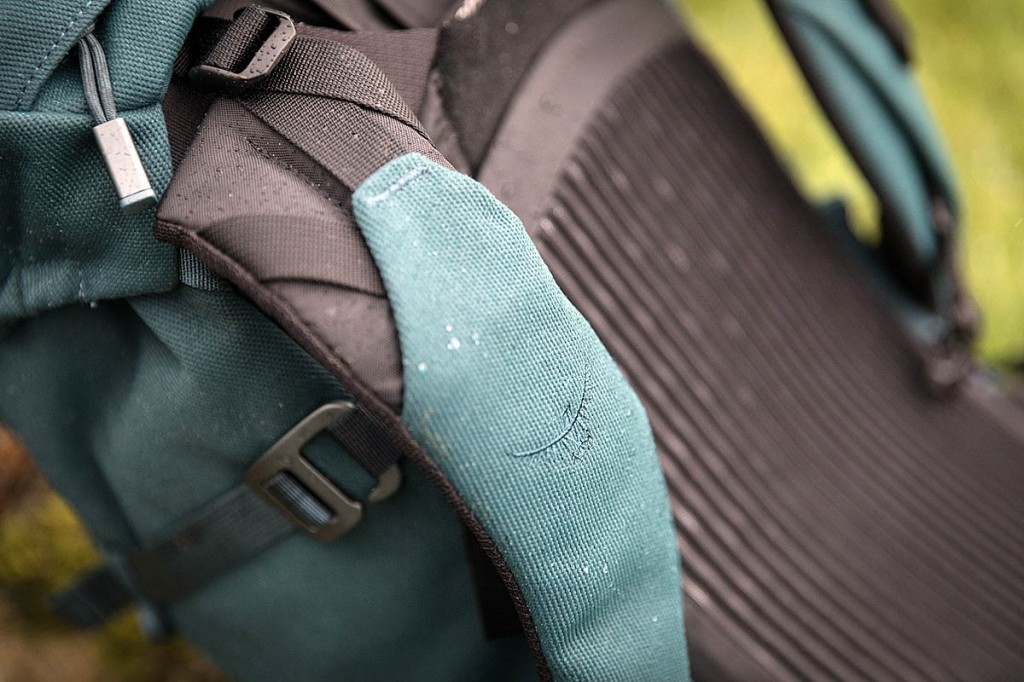
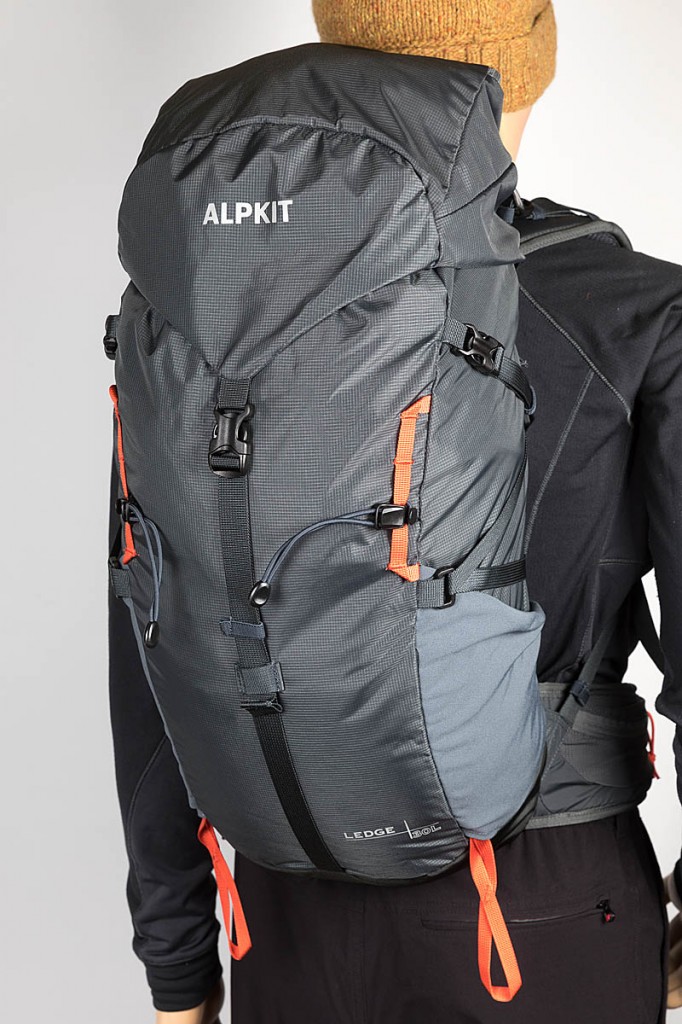
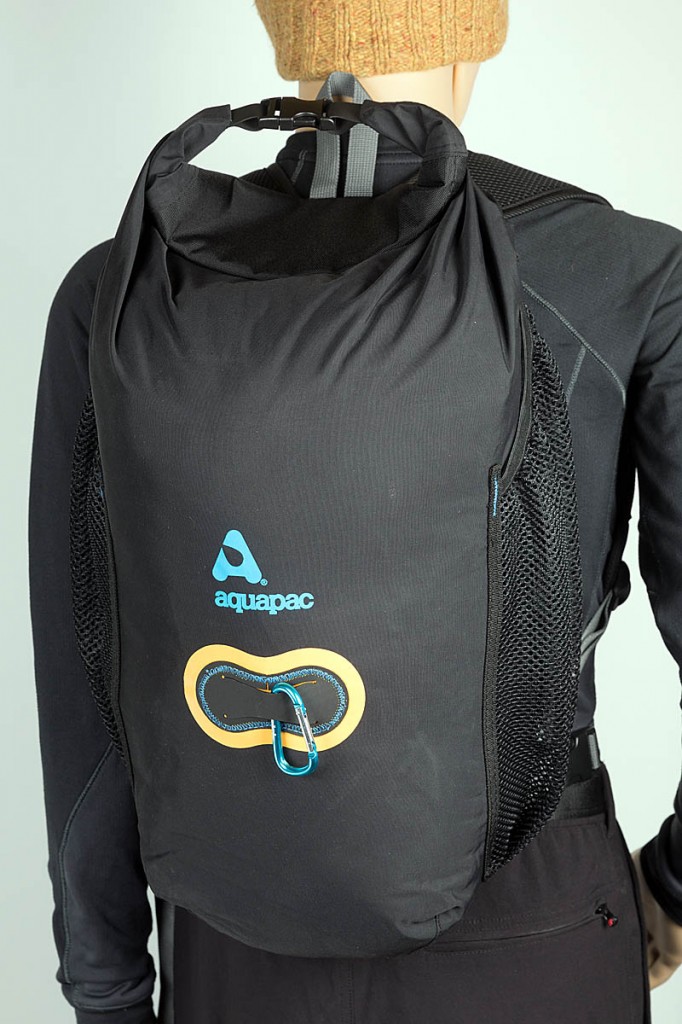
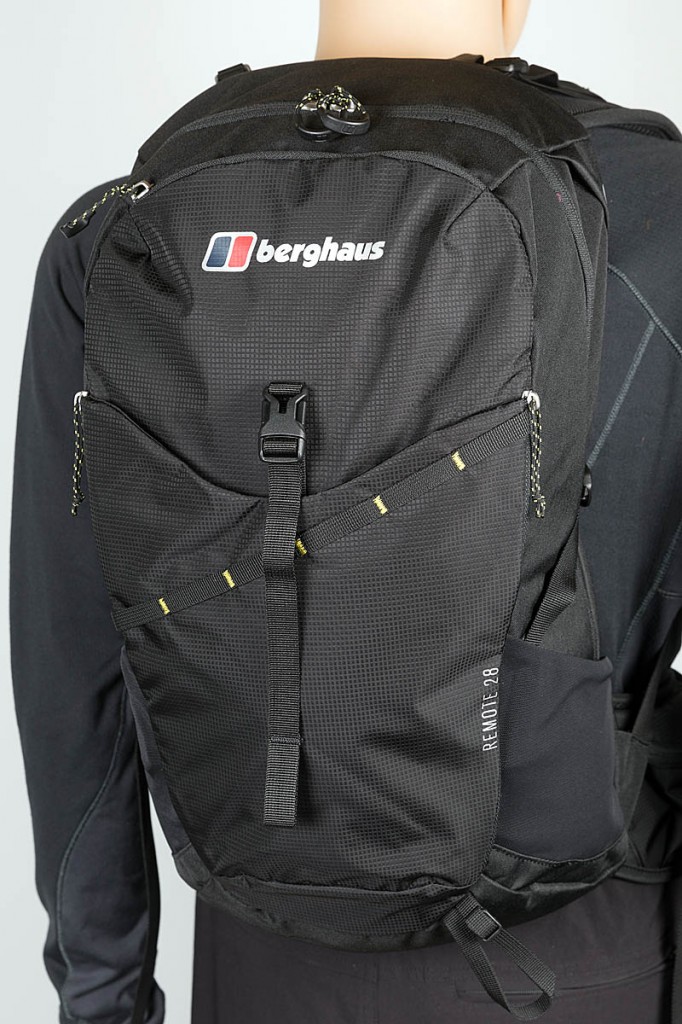
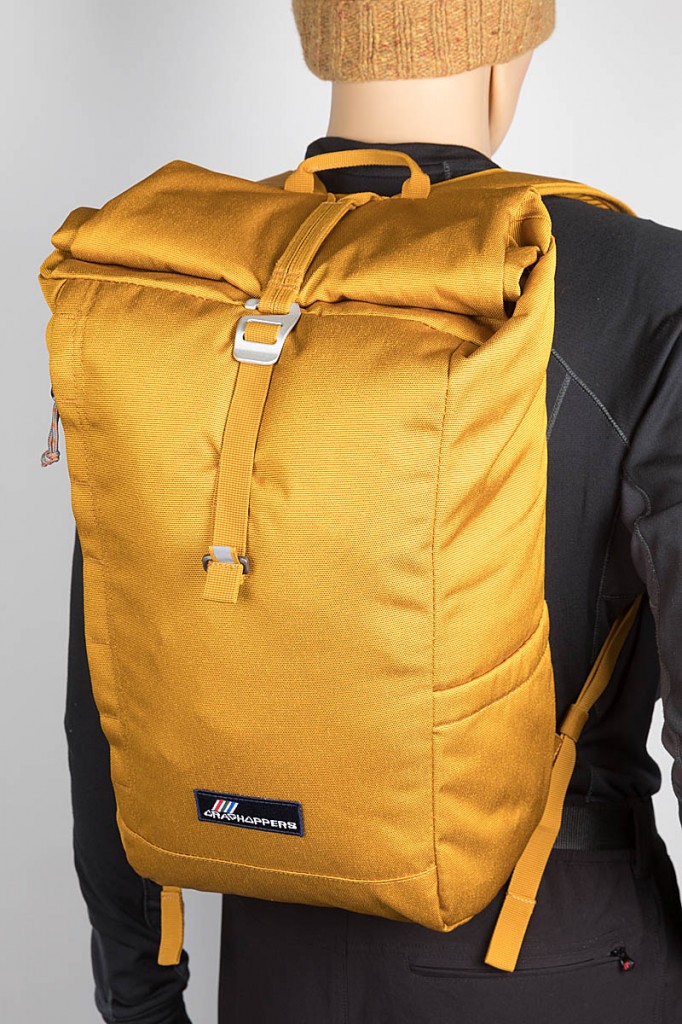
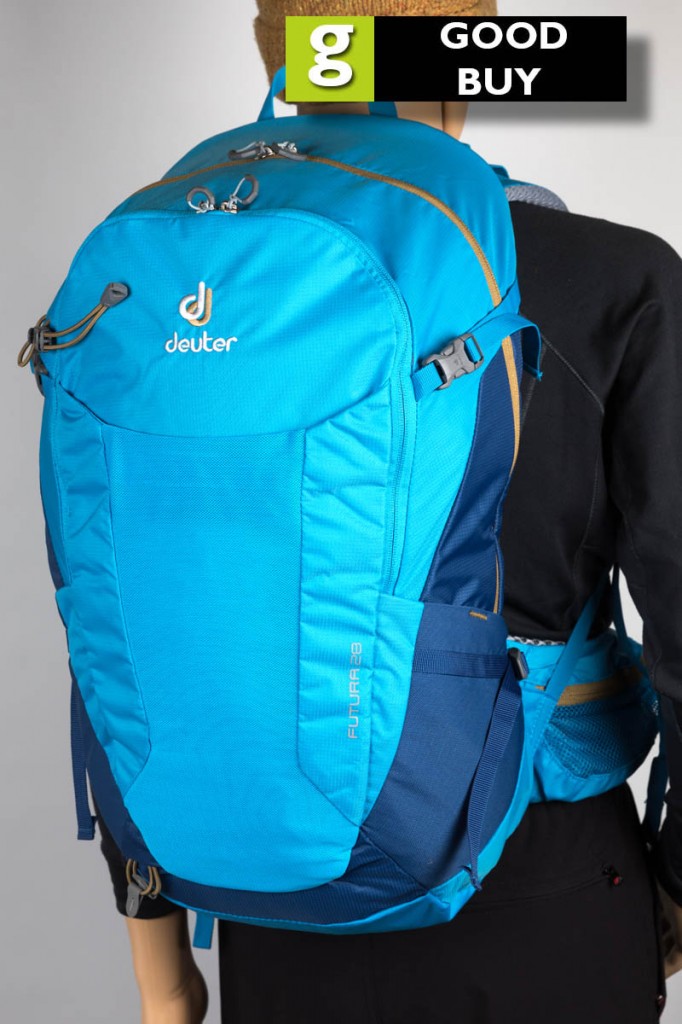
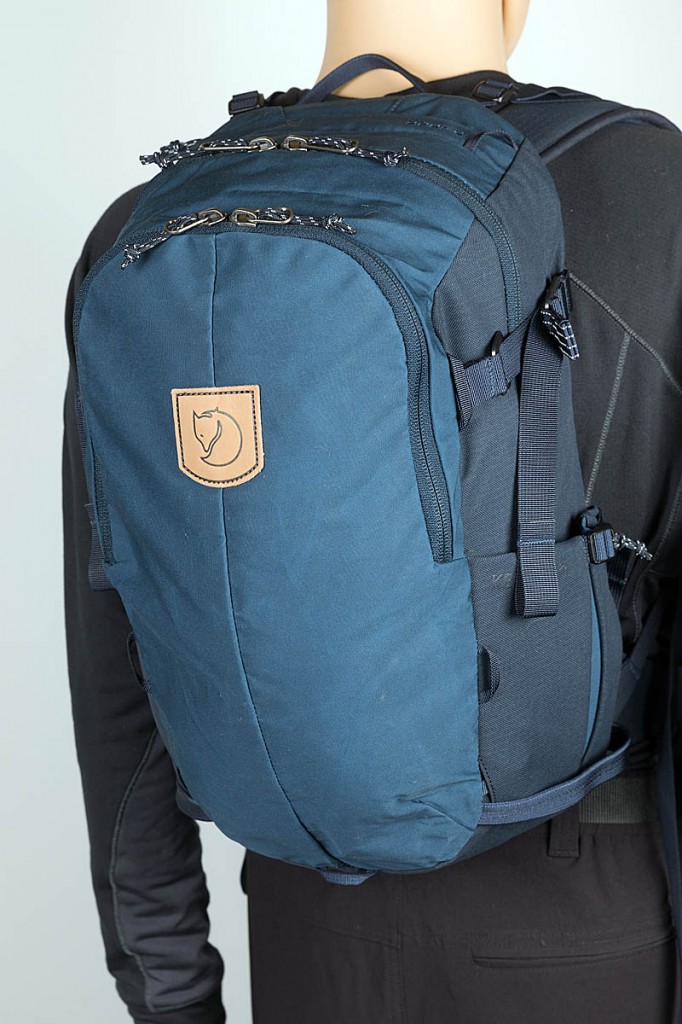
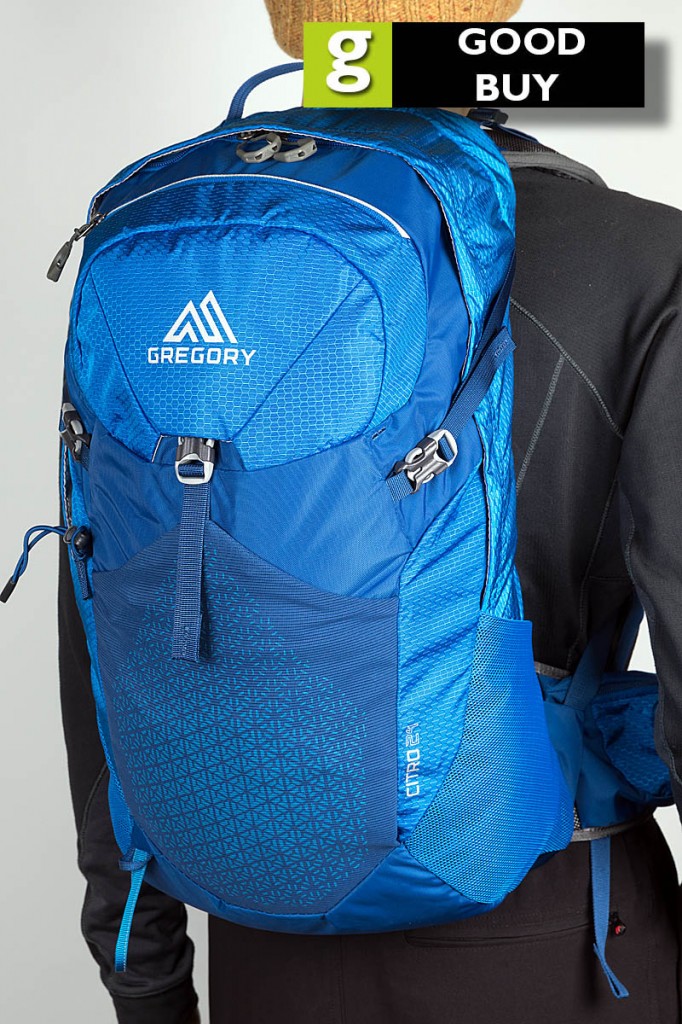
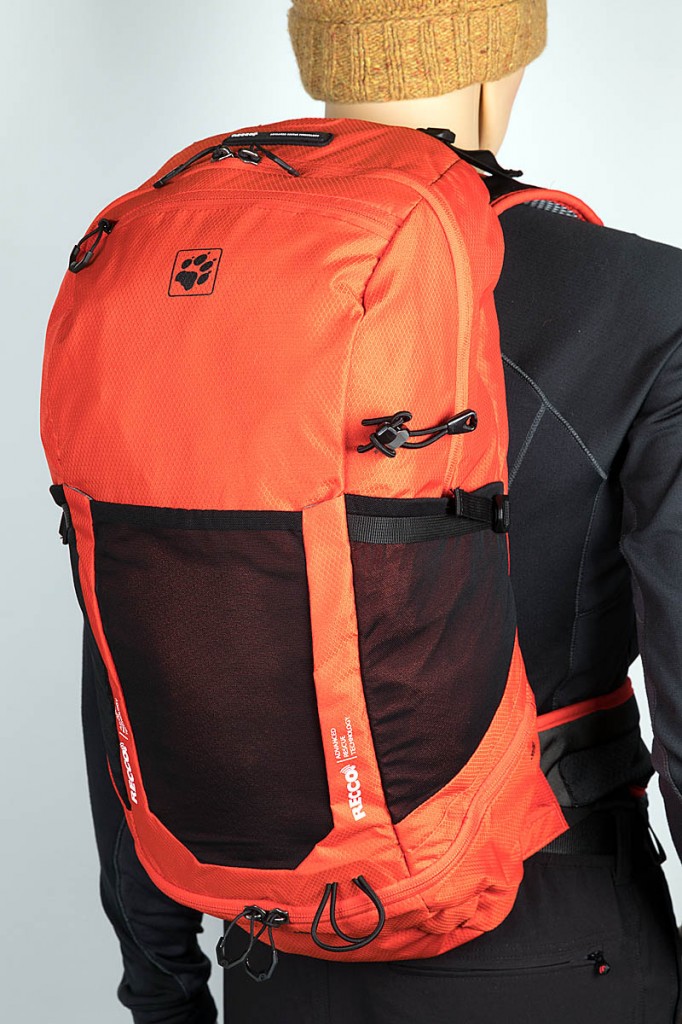
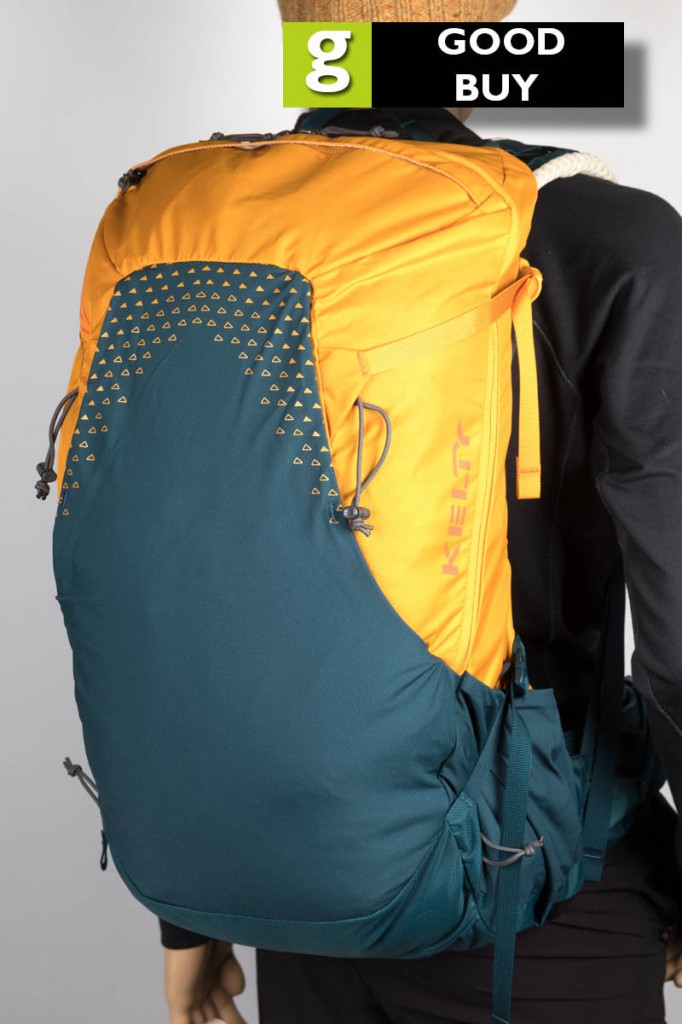
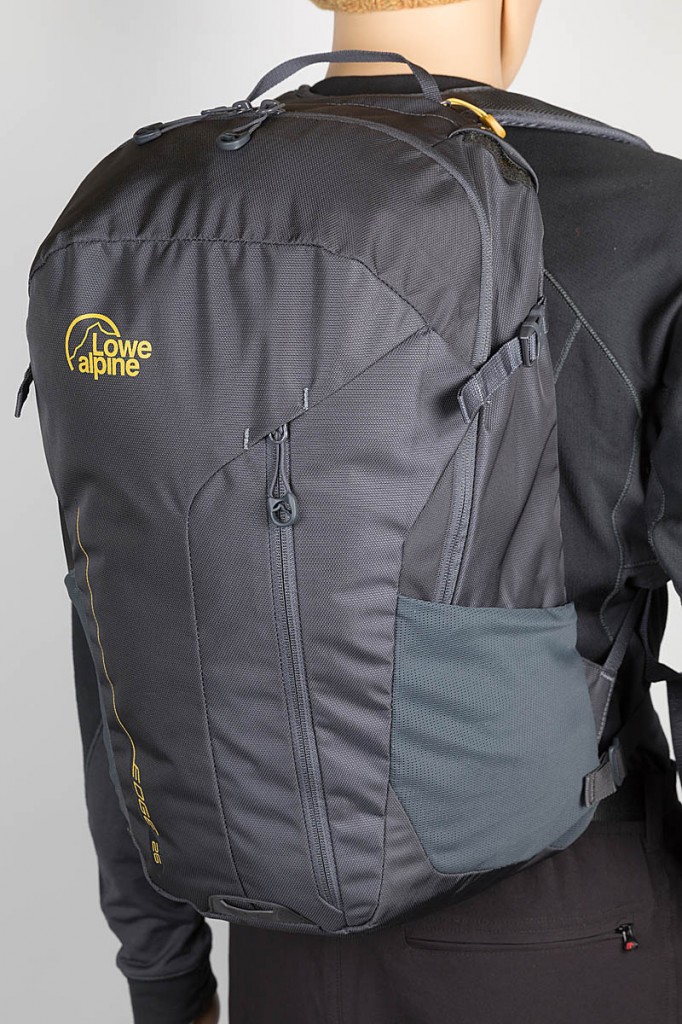
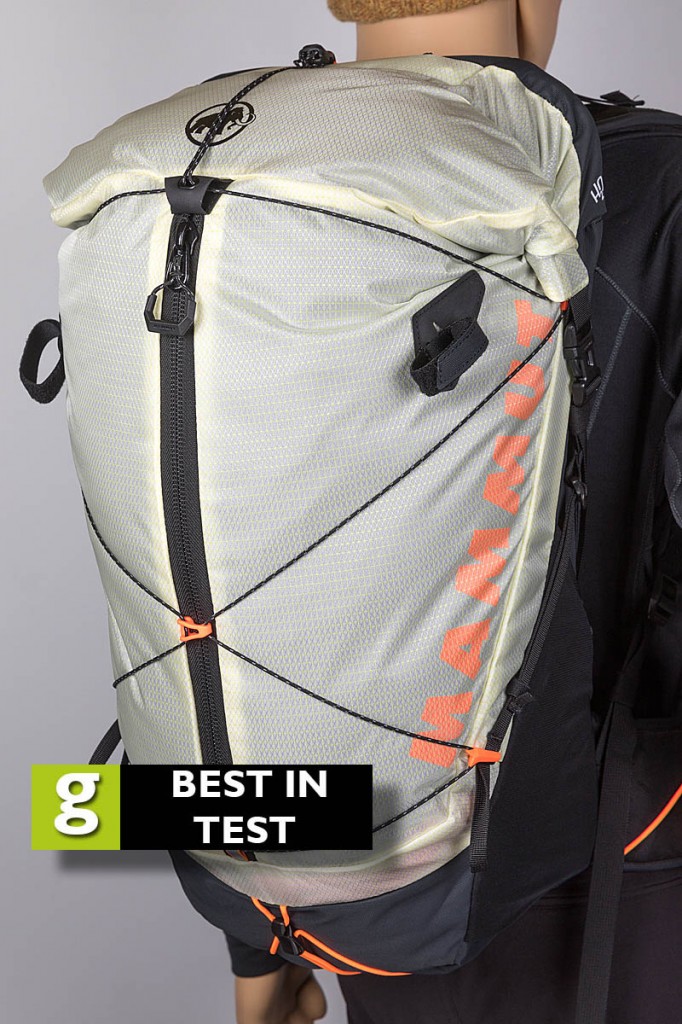
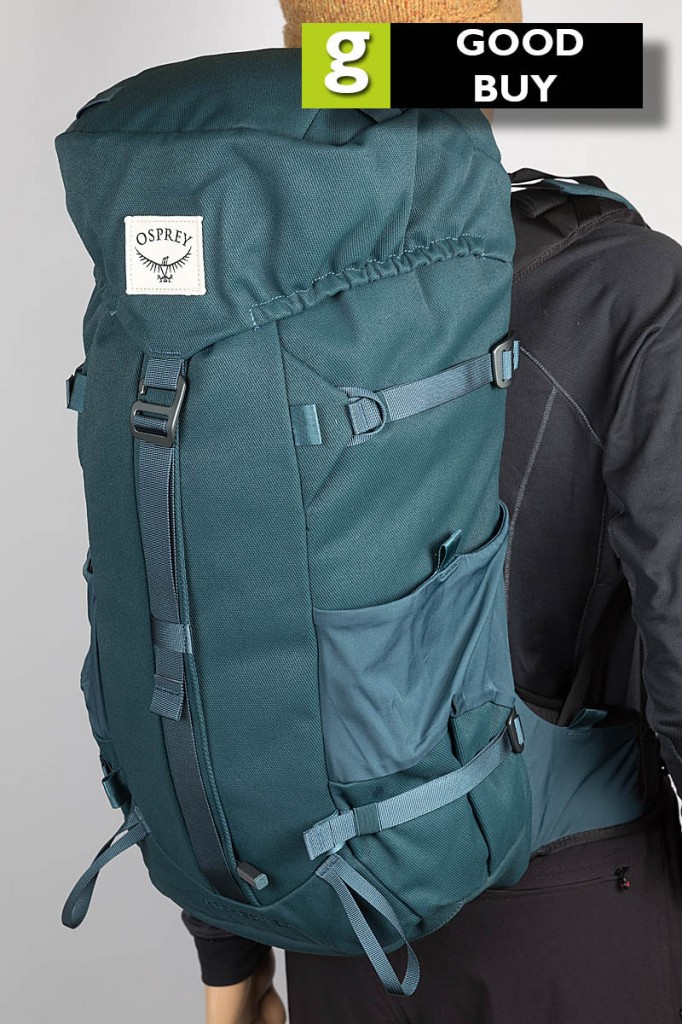
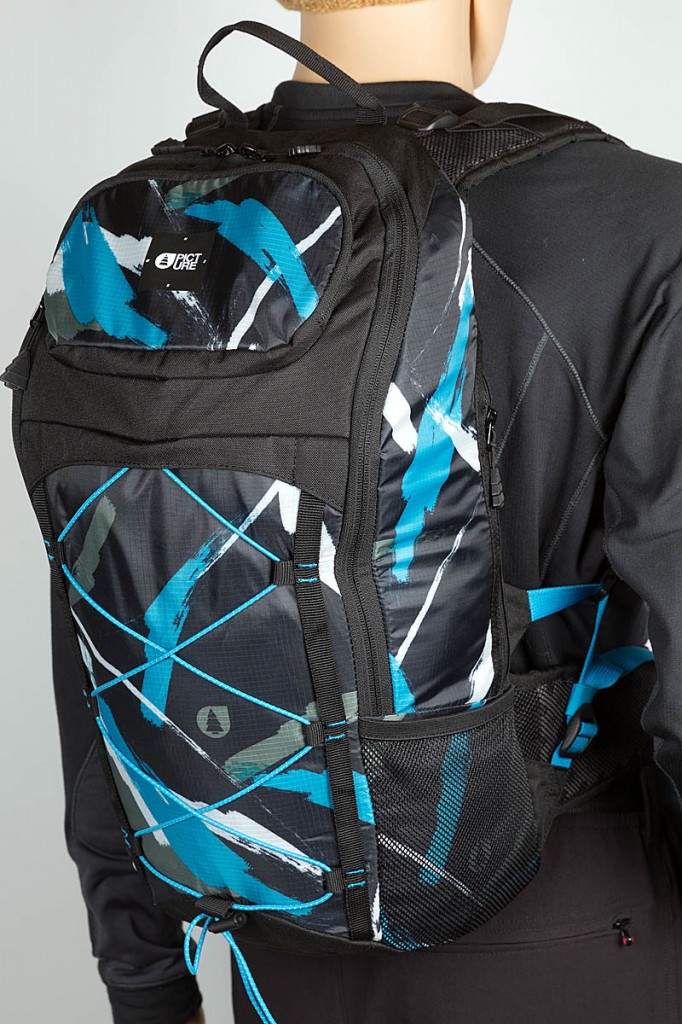
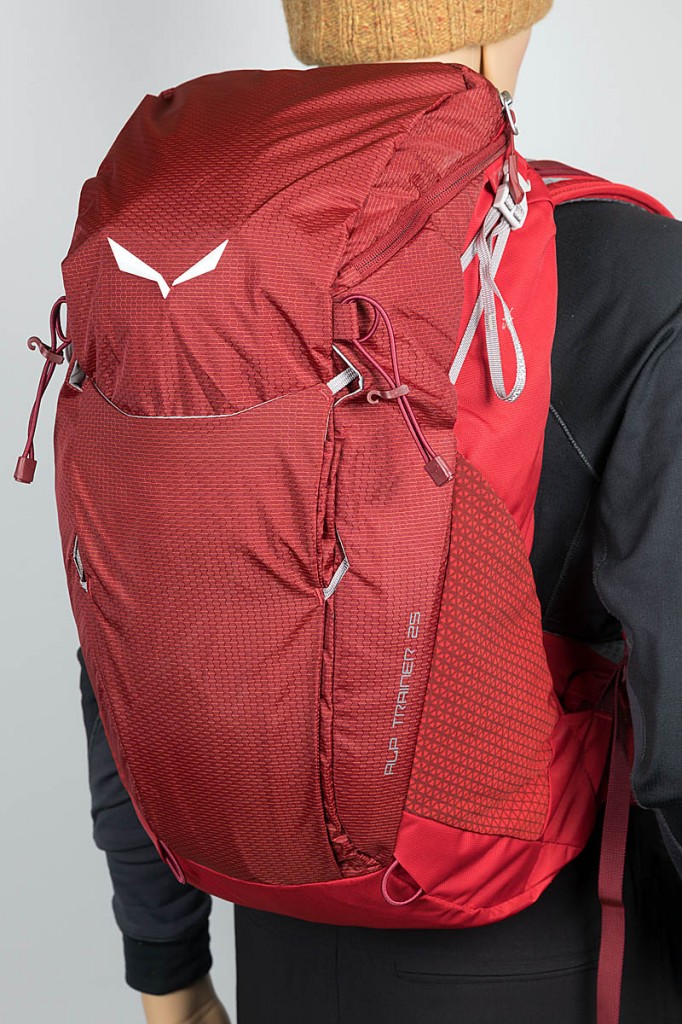
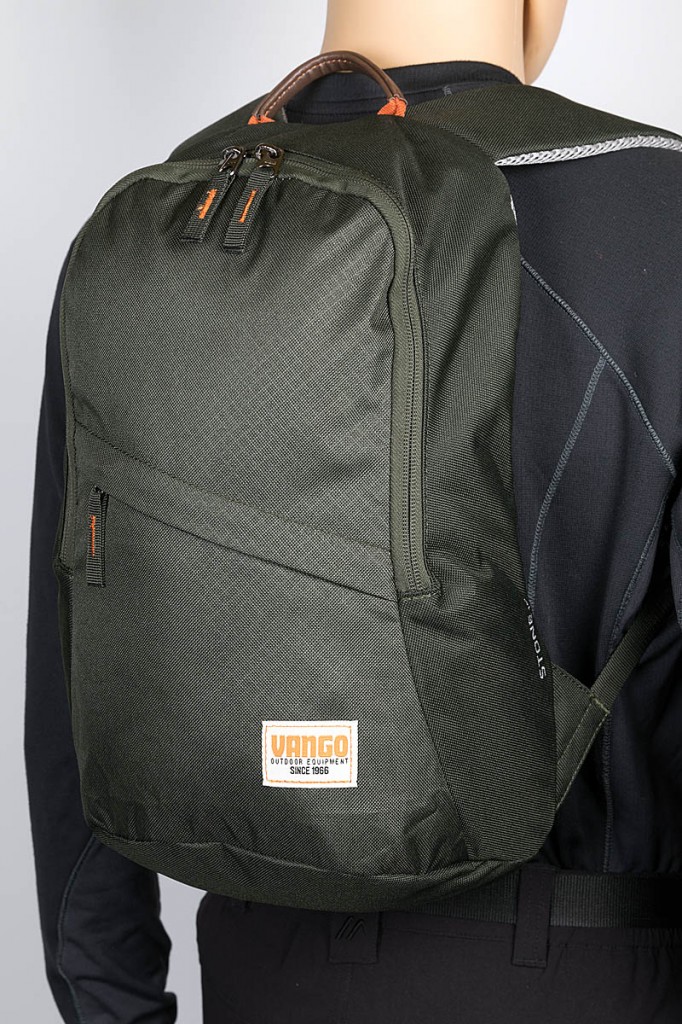
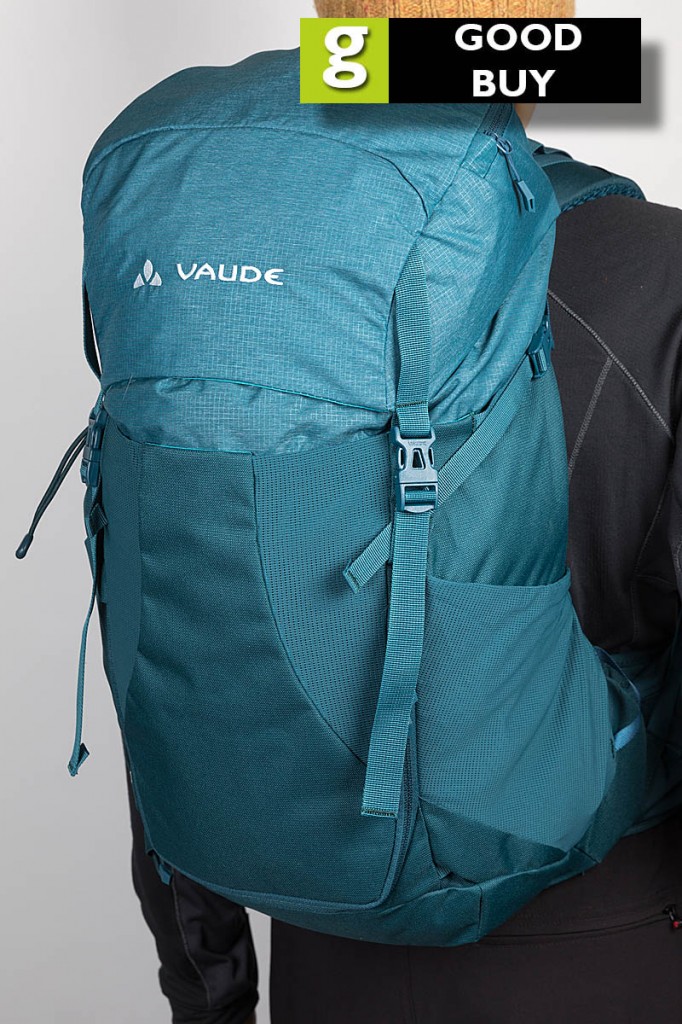
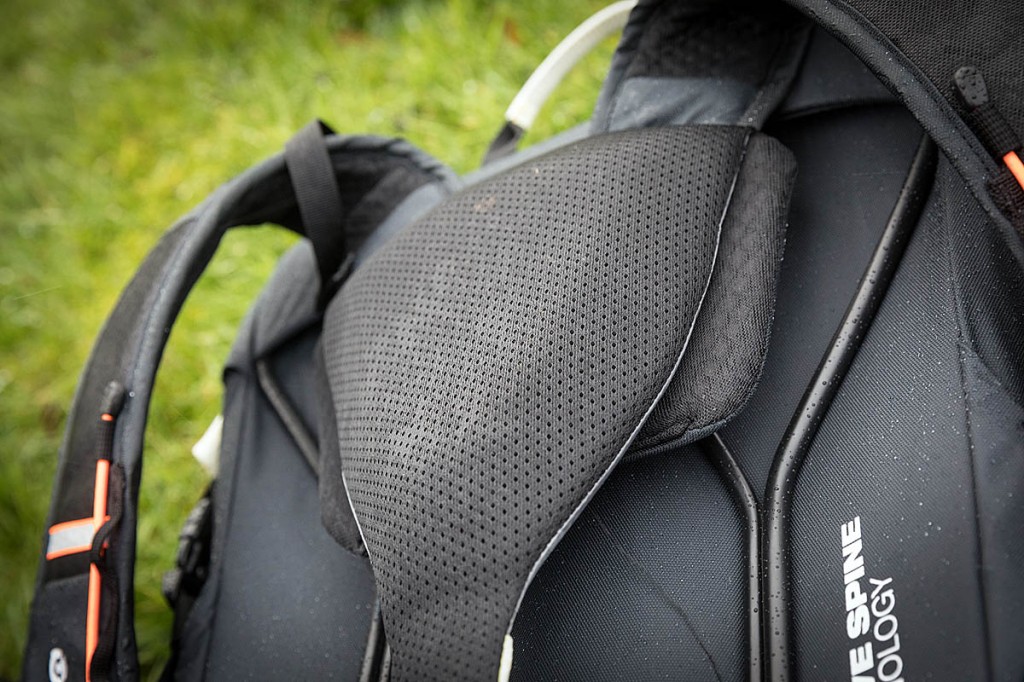
Llywedd
19 November 2020As a retailer, I'd like to point out that comparison tests like this one are pretty useless. You are not comparing like for like. If someone is looking for a 15 ltr rucksack, why would they want to compare it to a 30 ltr sack? If someone is looking for a climbing sack, they wouldn't consider a commuting bag, would they? The various brands all have individual bags that are sized and featured to compete with each other, even at similar price-points. Why not compare those bags, instead of a random assortment that have no relation to each other, other than a wide size range?
Barry Muir
23 November 2020You could have reviewed the Osprey Talon 22 and the 33 and left it at that. Case closed.
MunroMaiden
23 November 2020I agree with Llywedd - and I've noticed this before with "On Test" articles. A recent one compared trail running, trail walking and approach shoes - ones described as "best for technical terrain and scrambling" were compared with ones for "urban walks and everyday use".
As a fairly small woman, I would have liked to see more consideration given to the weight of the packs. My Osprey Tempest 30 is, literally, half the weight of the Archeon.
Also, for me, £200 for a 30-litre sack, or even £115 for 24 litres isn't so much "Good Buy" as "Goodbye".